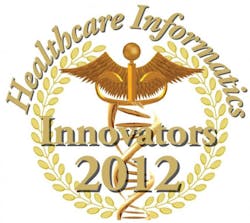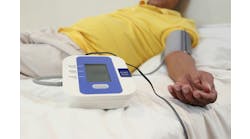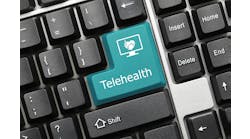Since April 2009, the University of Pittsburgh Medical Center (UPMC) health system has facilitated more than 4,000 electronic visits (eVisits), and even more importantly, has engaged four different payers to reimburse for this electronic service.
This eVisit program earned the 20-hospital UPMC health system in western Pennsylvania a finalist award in the Healthcare InformaticsIT Innovator Awards that was presented at this year’s Healthcare Information and Management Systems Society (HIMSS) Conference in Las Vegas.Since August 2008 through this March, UPMC has racked up 4,060 eVisits, and the program has seen roughly a 400 percent increase in growth since mid-2010. The health system topped 100 eVisits per month first in October 2010 and then 200 eVisits in December 2010. The eVisit program is tightly integrated with UPMC’s patient portal and personal health record (PHR), dubbed HealthTrak (a product from the Verona, Wis.-based Epic Corp., which is UPMC’s electronic health record vendor).“Once you have that solid foundation,” says G. Daniel Martich, M.D., CMIO, UPMC, “I think you can more effectively build an eVisit and personal health record program on top of that because without that linkage, the value to the patient and certainly the workflow on the physician side, goes away.”Martich projects the program could see at least a 25 percent growth rate in eVisits over the coming year, barring any significant changes in CMS or other reimbursement policies. There are currently 88 practices in 277 locations using HealthTrak that have registered close to 100,000 patients. Currently, a total of 397 primary care physicians can participate in eVisits.How it WorksUPMCs’ eVisit platform allows non-emergent patients to seek treatment for 25 primary care topics like back pain, bronchitis, burn, cold symptoms, anxiety, depression, and other problems, and the cost is the same as an office visit. (There are no specialist eVisits at this time.) The top problems that patients have requested eVisits for have been sinusitis (26.7 percent) and urinary symptoms (11 percent). Martich has said that his team has tried to be thoughtful around what additional topics to add. Recently, an eVisit for birth control was added, which was created by an internist interested in allowing easier access for underserved populations.After logging on to their HealthTrak account, patients can select an eVisit and complete a tailored questionnaire to provide the physician with medically relevant data in structured form. The questionnaires are consistent from patient to patient, compared to in-person visits or telephone conversations where the questions asked can vary from encounter to encounter. This consistency leads to a more consistent care and, over time, provides a source of data for analyzing care. After submission of the questionnaire, patients receive responses from their physician, typically within four hours and sometimes within minutes; and physicians are staffed to respond to eVisits through extended daytime hours, with many physicians responding outside of regular hours as well.“What we’ve found is that once we tell patients that there is this e-Visit concept,” says Martich, “we’ve been very successful both in growth of the number of patients on the portal, but really the side effect has been that patients are using the e-Visits more and more.”The eVisits functionality was initially developed using code from UPMC’s EHR vendor. Custom web page designs and software builds have been repeatedly implemented in the years that followed. The Internet transactions are carried out using Microsoft Active Server Pages (ASPs) (from the Redmond, Wash.-based Microsoft), and the security is provided using Microsoft’s Internet Authentication Service (IAS). The database for all data was built using InterSystems Cache (InterSystems Corporation, Cambridge, Mass.).Fitting into the Fee-for-Service ModelThe most important innovation of the eVisit program was the development of a framework for fee-for service based eVisits, which was critical for physician adoption, says Martich. It was and remains challenging to get traditionally conservative insurance plans onboard to pay for an email conversation between a doctor and a patient, he says.Before negotiating with payers, a pilot of the eVisit program was implemented. Data from this pilot program and the logic of using CPT code 99444 for telehealth were presented to several local insurance payers and soon multiple payers came onboard in April 2009.So far UPMC has four different payers reimbursing for the eVisit, and is still trying to get the Centers for Medicare & Medicaid Services (CMS) onboard. “While [CMS] embraces the idea of an eVisit by creating a CPT code, they don’t have any reimbursement for that yet,” said Martich. “I think they are concerned that, ‘if we start making this one of the benefits to all of our membership, we may see a huge increase in this, without a huge decrement in emergency or doctors visits, and this is going to cost us more money.’”Dr. Martich says that CMS and other insurers are waiting for studies, like the one he and his UPMC colleagues are currently working on, to evaluate the cost, follow-up care, and efficacy of treatment for office visits versus eVisits. But UPMC posits that the reduction in preparation and set up time for eVisits will make it possible to treat more patients online during a given time period than in person, and consequently, increase revenue for physician practices.Laying a foundation of trust for physician adoption was important early on, says Martich. Physician fears were largely that eVisits would overwhelm their office staffs and flood them with verbose patient questionnaires.“There is always some trepidation initially, but after one or two e-Visits, that fear usually melts away,” adds Martich. “The docs say they’re able to provide the same level of care, and patients are far more concise when they have to fill out a form. Many doctors are finding patients to be less wordy in print than if they were able to pick up the telephone.”Martich says there are plans to implement video capabilities to this program, but much in terms of patient confidentiality and security needs to be worked through before that can happen. Baby steps must be taken first, like for starters, in May, patients will be able to pay their copays, specialist, or hospital bills through HealthTrak and view a detailed bill of the procedure or inpatient stay. This summer patients will be able to submit images, for example of a rash or wound, during an eVisit.



